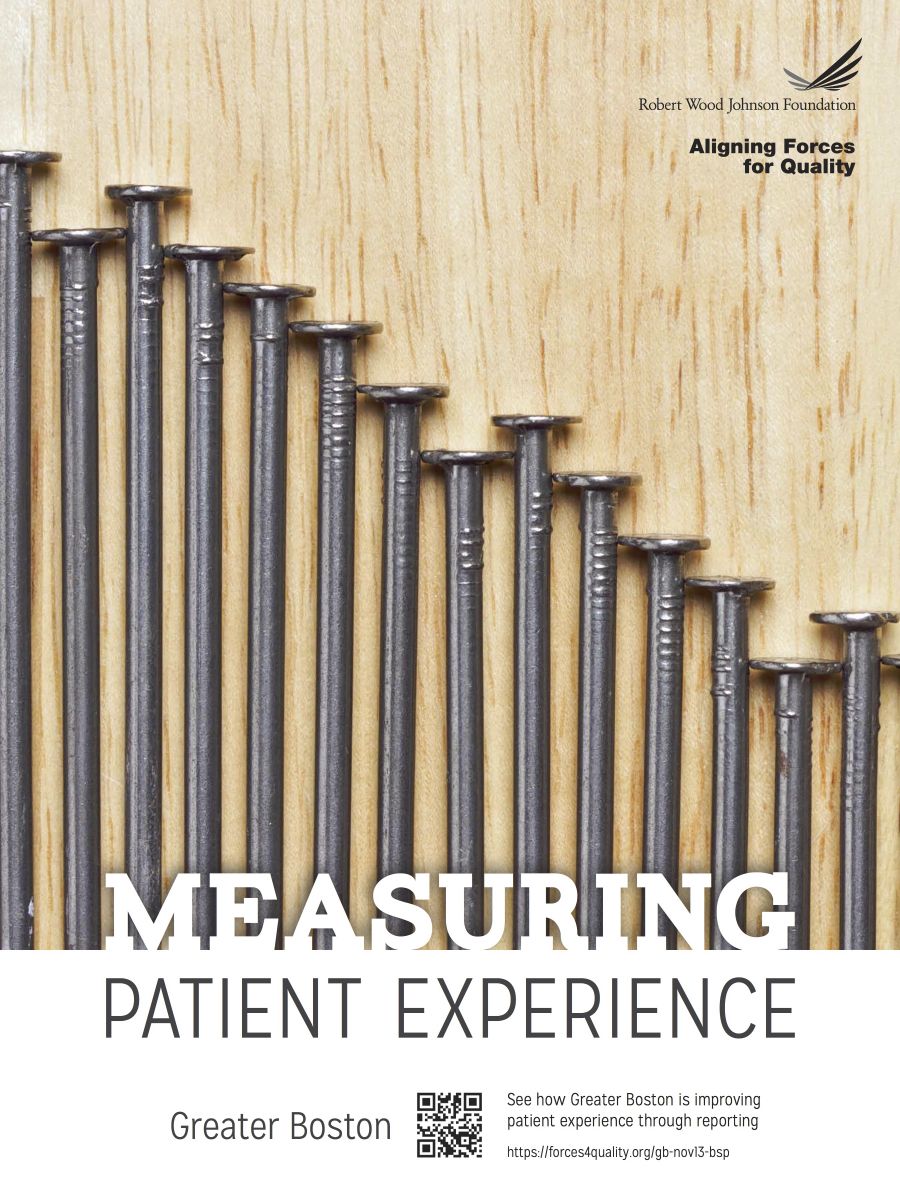Taking the Next Step in Patient Experience
The Aligning Forces for Quality initiative in Greater Boston, led by Massachusetts Health Quality Partners (MHQP), has fielded a statewide patient experience survey (PES) every other year since 2005. In 2011, MHQP and Consumers Reports collaborated to provide Massachusetts consumers with reliable and useful information about primary care physicians. Together, MHQP and Consumer Reports released patient experience ratings of nearly 500 primary care physician practices in Massachusetts, including 329 adult practices and 158 pediatric practices. The report promoted patient engagement, encouraging consumers, and creating opportunities for them to become more involved in their health care. MHQP’s results were based on 64,000 responses to a statewide survey completed by patients. The survey asked about the areas of care that patients know and care about most, including how well physicians communicate, coordinate medical care, and know their patients, and whether patients would be willing to recommend their doctor to family and friends. The survey also asked patients about their experiences with the office staff, including nurses, receptionists, and the people who handle billing and insurance.
 Consumer Reports also released the MHQP guided survey to its more than 7 million subscribers in its special health report. Twenty-six percent of readers who took the survey responded that they felt better prepared for their next doctor visits. After seeing the survey’s impact, MHQP decided to take its patient experience reporting to the next level.
Consumer Reports also released the MHQP guided survey to its more than 7 million subscribers in its special health report. Twenty-six percent of readers who took the survey responded that they felt better prepared for their next doctor visits. After seeing the survey’s impact, MHQP decided to take its patient experience reporting to the next level.
For its 2013 PES, fielded this past spring, MHQP made a change to its measurement tool. MHQP’s PES instrument was developed in parallel and is very similar to the Clinician and Group Surveys–Consumer Assessment of Healthcare Providers and Systems (CG-CAHPS) instrument. Similar to MHQP’s survey instrument, the CG-CAHPS survey asks patients about their experiences with care rather than their satisfaction. CG-CAHPS is also standardized to be used in communities across the country. This allows health care professionals, payers, and consumers to assess and compare patients’ experiences on a national level. It also helps providers identify their strengths and weaknesses and measure their progress.
“The CG-CAHPS has become the standard for measuring the experience of patients receiving care. We want to be aligned with these national standards,” said Rose Judge, project director for patient experience measurement for MHQP.
An independent test survey was funded to assess the impact of changes to the survey and to help inform the statistical adjustment of results needed to evaluate improvement over time. This survey was fielded at the same time as the statewide survey so the appropriate comparisons could be made.
“We can see these changes have impacted our ability to trend results across survey rounds. However, the statistical analysis of results indicates that there has been continued improvement in patient experience, particularly in care integration, adult patient education, and office staffs for pediatric practices,” said Judge.
